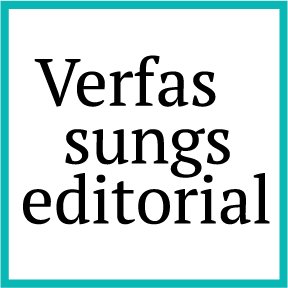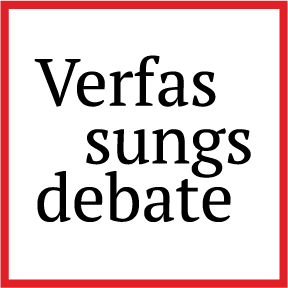Slovakia’s Electoral Reform at a Crossroads
Fico's Proposals for Change
On May 21st and 22nd 2025, Prime Minister Robert Fico and Interior Minister Matúš Šutaj Eštok presented a series of proposals for substantial changes to Slovakia’s electoral system. The opposition swiftly criticized the plans as a threat to democratic governance. While the proposals differ in the severity of their constitutional and political implications, the most troubling is the significant increase in electoral deposits, which risks entrenching structural barriers to participation. In the context of Fico’s recent public rejection of liberal democracy and praise for one-party regimes, these reforms warrant close scrutiny – if not alarm.
From stability to reform
Slovakia’s electoral system for its National Council elections has remained relatively stable over time. Its foundations were laid in 1990 – just after the fall of the communist regime in then Czechoslovakia, and even before the establishment of the independent Slovak Republic. Although the country’s electoral law was formally codified in 2014 – through the adoption of the Act on the Conditions for the Exercise of the Right to Vote and the Act on the Electoral Campaign – the last truly systemic change took place in 1998, when the original four electoral constituencies were replaced with a single, nationwide constituency. This principle, along with a system of proportional representation, was elevated to constitutional status in 2023 through an amendment to the Slovak Constitution. As a result, these core features of the electoral system now enjoy enhanced legal protection, as any amendment to the Constitution requires a qualified majority in parliament.
Now, the government is suggesting several changes to this framework, some of which may require a constitutional amendment. These proposals vary significantly in their scope and political sensitivity. One of the less problematic suggestions, for example, is the reduction of the number of members in the National Council from the current 150 to 100, requiring a Constitutional Amendment. The government justified the proposal as a measure to consolidate public finances. While eliminating 50 parliamentary seats would indeed lower costs associated with deputies’ offices and remuneration of their assistants, it is quite clear that the fiscal impact would be relatively minor in the context of the overall state budget. As such, the proposal appears more symbolic than substantive, and may reasonably be described as populist in nature.
Changing the map
In contrast, a more substantial – and potentially more far-reaching – proposal concerns the structure of electoral constituencies As mentioned above, Slovakia has long used a single nationwide constituency – a core feature of its electoral system. The Minister of the Interior now proposes replacing this model with multiple constituencies. The main argument in favour of this change is the need to ensure more proportional regional representation in the National Council.
Like the proposal to reduce the number of parliamentary seats, this change would require a constitutional amendment. On its face, the proposal is not incompatible with the basic principles of Slovak constitutionalism. Indeed, from a comparative perspective, multi-constituency systems within proportional representation frameworks are far more common than single-constituency ones. Still, the advantages of Slovakia’s current model – particularly its administrative simplicity and clarity for voters – should not be underestimated. In an age where elections are increasingly delegitimised by political actors, the comprehensibility and perceived fairness of the electoral system are essential to maintaining public trust. If the government’s true aim is greater territorial balance, a second chamber of parliament may be a more fitting institutional response than restructuring the lower house.
Higher bar, fewer voices?
Another significant intervention in the electoral system concerns a possible increase in the electoral threshold. Under the current rules, a party’s candidate list must receive at least 5 percent of all valid votes to qualify for seat allocation. For coalitions, the threshold increases: 7 percent for coalitions of two or three parties, and 10 percent for coalitions of four or more. The proposed reform would raise the 5 to 7 percent. Unlike the other changes discussed, this one does not require a constitutional amendment; a change to the Act on the Conditions for the Exercise of the Right to Vote would suffice, as the Constitution does not explicitly regulate the electoral threshold.
Given the highly fragmented political scene in Slovakia, where a significant part of parliamentary parties receive only around 5 to 8 percent of the vote, the proposed changes could significantly reduce the number of political entities represented in the National Council. This could have some stabilising effects: fewer parties in parliament may ease coalition-building and protect governments against populist disruption. As a parliamentary republic, Slovakia depends on coherent governing majorities to form and maintain executive authority. While Slovakia has generally managed this challenge well – with majority governments formed relatively quickly after each election – past experience also shows fragile coalitions often collapse, as seen after the 2020 elections or during the Dzurinda and Heger governments.
On the other hand, raising the electoral threshold would increase the share of “forfeited” votes – those cast for parties that fail to meet the threshold – which is already considerable under the current system. Importantly, Article 74 of the Slovak Constitution stipulates that members of the National Council should elected according to the principles of proportional representation. The proposed increase in the electoral threshold could stand – at the very least – in significant tension with that constitutional principle, since a higher electoral threshold will ultimately very likely reduce the resulting proportionality of election results, as well.
Pay to play
Yet the most troubling and noteworthy proposal of all concerns the increase in the electoral deposit. The deposit is the sum a political party must pay for its candidate list to be registered for parliamentary elections. Currently, this amount is 17,000 euros; under the new proposal, it would rise to 50,000 euros. The electoral deposit is regulated by the Act on the Conditions for the Exercise of the Right to Vote and is not directly addressed in the Slovak Constitution.
The current electoral deposit of 16,596.96 euros – an amount corresponding to 500,000 former Slovak crowns – has already been reviewed by the Slovak Constitutional Court. In its 2009 decisions (PL. ÚS 6/08), the Court held that the electoral deposit serves a legitimate goal, which is to ensure that only parties that have a real chance of success – and whose objective is to gain parliamentary representation – take part in elections. However, the Court also noted that the amount of the deposit is on the verge of constitutional acceptability. In reaching its conclusion, the Court drew on the case law of the European Court of Human Rights, which has not found the electoral deposit system to be incompatible with the European Convention on Human Rights.
The proposed increase would nearly triple the current electoral deposit. By contrast, the average nominal wage in Slovakia has only doubled between 2009 and 2024. The Constitutional Court’s ruling turned on a recalculation of the ratio between the electoral deposit and the average wage – an assessment that proved decisive. This indicates that the proposed increase in the electoral deposit represents a substantial increase in the financial burden on political parties, rather than a mere adjustment reflecting economic growth.
Interior Minister Matúš Šutaj Eštok has justified the reform on the grounds that the current deposit no longer serves its function – yet he has offered no evidence or detailed rationale to support that claim. It is therefore highly questionable whether such a steep increase is indeed necessary, or whether it represents a disproportionate restriction on political participation.
Notably, the decision by the Constitutional Court was not unanimous. In his dissenting opinion, Judge Mészáros argued that the electoral deposit violated Art. 31 of the Constitution, which requires that the legal framework guarantees free competition of political forces. He also criticised the majority for effectively dividing political parties into those that are “authentic” in electoral competition and those that do not have a sincere interest in elected mandates. I share this concern. In a democracy, only voters should get to decide who is serious about running for office and entrusted with managing public affairs.
Another problem with the electoral deposit as such is that, unlike the electoral threshold, it does not correct the results of the election after the voters have made their choice. On the contrary, it comes into effect before voters even have opportunity to cast their votes. In this respect, it constitutes an unconstitutional restriction on electoral competition. Rather than increasing the deposit, we should be discussing whether it ought to be abolished altogether.
What comes next
In the end, while several of the proposed reforms may be unnecessary or politically opportunistic, most do not, in their current and still vaguely defined form, amount to a fundamental threat to Slovakia’s democratic order. Although opposition MP and former Minister of Justice Mária Kolíková has described the proposals as “an attack on the foundations of democracy”, that assessment likely overstates the case. With the exception of the proposed tripling of the electoral deposit – which raises serious constitutional and democratic concerns – the remaining measures range from being mildly in tension with constitutional principles to largely symbolic and populist in nature.
Much now depends on the details of the eventual legislative draft. Until then, the proposals merit close and sustained scrutiny. Not least, their significance becomes clear when viewed within the broader political context. Fico has publicly praised one-party regimes in China and Vietnam as models of effective governance, and argued that liberal democracy has “failed” precisely because it disrupts political continuity every four years – the length of Slovakia’s parliamentary term – forcing each new government to “start from scratch.” In such a context, even formally lawful reforms may potentially function as instruments of democratic erosion.




I find this proposal alarming, especially when some can be passed without constitutional amendment process.
Electoral thresholds in European constitutional democracies tend to be 4 or 5%, and minorities often need that protection.
Would be interested in what you think about a mixed system like Germany’s which allows regional representation but folds that into PR
Thanks Marek